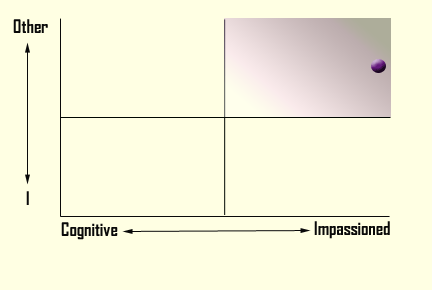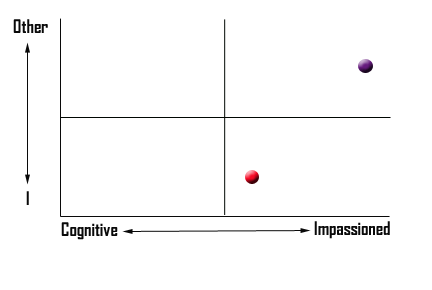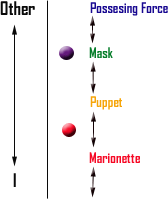Originally published by Mo on Gaming as Women, October 23, 2013.
Last time I talked about ways that care and justice players could come into agenda conflict in games while discussing some personal experiences in White Wolf LARP and MUSH. I’m reaching the end of the care and justice part of the series (at least for now) as it’s only one of the topics I wanted to explore and has gone on longer than I had originally intended! In this last article I’ll be talking about the X-Card, how it relates to care and justice, and how discussing it reveals things about our orientation.
For those unfamiliar with the X Card, it is the brain child of John Stavropoulos. John is the President of NerdNYC, one of the team leads for Games on Demand GenCon, and was part of the team (along with fellow GaWdians Jessica Hammer and Meguey Baker) that went to Ethiopia last year to develop practical social justice development games for Girl Effect. He is an all-around awesome guy and a GM for literally thousands of players a year. The concept of the X card is simple: There’s an index card with an X on it. It sits in the middle of the play table. At any time, if any person involved in the game becomes uncomfortable, they can tap or pick up the X card and the thing in progress will stop – no questions asked, no explanations required.
The X card is a mechanic – one that negotiates social play. But it’s a mechanic that is independent and transferable. It can be used in conjunction with any system. It serves as an overlay to the game as it exists – a rule zero over every other mechanic in a game’s system. The X card works functionally at several levels:
First and most powerfully (IMO), the X card frames play and shortcuts social contract of the game. Introducing the X card initiates a conversation among all participants at the beginning of play. It sets (particularly when introduced as recommended) a clearly communicated set of priorities to everyone involved. Directly from the X Card document: “The people playing are more important than the game we are playing.†Participation within this framework – effectively achieved only via buy-in – establishes a firm group commitment to tend to the emotional and social needs of the people at play, even, if necessary, at the expense of the fictive outcome, the flow of play, the play experience, or the game’s design.
Next, the X card enables and facilitates social safety at the table. It is a particularly important and powerful answer to dealing with hard psychological triggers being set off in or around the fictive content of the game (e.g. rape, child abuse, addiction) which could slide an otherwise happy play experience towards trauma. However, it is also fully legitimate to use the X card to overcome barriers to social enjoyment (e.g. undesirable subjection to in or out of game racism or sexism) or personal comfort (e.g. a player experiencing too much bleed).
Thirdly, with most playgroups, even talking about the X card in a way that frames the priority up front will influence the social environment in a way that makes the participants more mindful of monitoring comfort and distress around the table. This can create an environment that is more inter-personally supportive, and in which the X card is actually less likely to be used(1).
I shouldn’t have to explain too much at this point about what kind of facilitator this overlay can have for care oriented people, especially in unfamiliar groups where relationships are not pre-established (e.g. con games, first time groups) or where relationships may be known but the system is unknown or may feel dauntingly justice-oriented. It states upfront that even if the rest is unknown, the priority is that we as a group will take care of you, and will make sure our relationship with you is OK. This kind of overlay can literally make access possible for some players and some games or communities. I personally don’t think it’s a co-incidence that the X card grew out of John’s wealth of experience in communities of play that have an explicit – and successful – agenda of attracting and promoting diversity among participants.
Unsurprisingly, the X card does also have its critics. As an example, players who find their fun in an agenda that prioritizes brutal (but consensual) brinksmanship legitimately don’t want safety nets to overlay the game. Players who find their fun in unsafe (and again, consensual) edgeplay with strong bleed and do not want anyone to have an out(2). There are many games that are at legitimately at odds with X card use. That’s not surprising! All mechanics, both core and overlay should serve the goals of the participants and their desired outcome of play. The X card can actually help clarify terms for players that like these kinds of games. Right up front, the X card is a clear and present signal that the game does not support their kind of play, and allows them to opt out.
But back specifically in terms of care and justice: some (often strongly) justice oriented people find the concept of the X card deeply uncomfortable. Remember that justice orientation assumes separation, prioritizes self , serves goals around autonomy, agency and is deeply concerned with rights management as mitigated and enforced by an external system. This all means that the X card inserts a fundamental short circuit into their desired game structure. It says: “At some point in the game, I may suddenly and unexpectedly lose my right to safely proceed in pursuing my goals without any explicit justificationâ€. And because justice oriented individuals reach to universalized principles or points of view rather than localized ones, creating a mechanic that specifically prioritizes the needs of an individual in the moment over the global laws of the game can seem extremely arbitrary, and feel violating to their base need for fairness – and justice – in the game.
Notably, this is a barrier for some justice players and not others, largely because as an accepted overlay it is part of the express and explicit mechanical system of the game, and as such can comfortably fulfill many justice-based players’ conceptual understanding of what fairness means as the course of the game. But if that is not that case, and we come across a game where there is a critical divide between actual players at the same game, what then? This is the point that things become political. To quote Leonard Cohen: (i)“it’s the homocidal bitchin’ that goes down in every kitchen to determine who will serve and who will eatâ€(/i). Whose needs will get met, how will they be met and why? (3)
To me, it’s critical to evaluate these situations contextually. As an overlay to an existing system it should be contextually compared to that system’s degree of support for care or justice. For example, an X card may be a small ask when used as an overlay on a system that offers strong justice support, especially one that also restricts care orientation. But when the situation is reversed (strong care support with strong justice restriction) the X card may further disenfranchise a justice player at the table. Whose needs are more consistently being met, who needs more support, and what is the X card doing in service of those goals? Also, worth considering is the context of the game. Within the community of practice (organization, con, single group’s history) what is the level of systemic support for players of each orientation? Will offering concessions like the X card create an environment where fair access and inclusion can be more equitably be distributed until more care supported games are designed and offered?
It’s also important to contextually evaluate the whole X card frame structure rather than just looking at individual moments of its mechanical invocation. The X frame as asserted in the social contract emphasizes a responsibility to tend to the communal social environment. This means that as well as creating opportunities for players to invocate their safe space, it should socially influence the participants towards containing misuse. In practice, those that have greatest opportunity to report on the X card’s use in actual play (like John) report that the X card itself gets used very infrequently. I personally think that people who have been socially conditioned towards care orientation are by the same conditioning more likely to invoke the X card, more likely to respect the boundaries of accepted use, and more likely enact autonomous acts of reciprocity(4).
And that’s some of my thoughts on the X card! Next up: Who knows? I’m going to choose a new topic for the next chapter of posts.
(1) For an first hand use of the xCard in game, see Brie Sheldon’s article on her X card experience
(2) There are strong similarities between the X card and the Nordic larp safewords Cut/Kutt and Brake/Brems both in terms of desireability (for use in emotional situations), and in the mechanisms themselves.
(3) This conflict is also at the heart of many of the con harrassment policy debates.
(4) Please be clear that I am not implying that care orientated people are any more immune from personal dysfunction, transgressive or coercive behaviour than justice folks. A person’s quality of behavioural interaction is not determined by their orientation, the orientation is only the paradigm we see their choice of actions enacted through. There will always be assholes on all sides!


